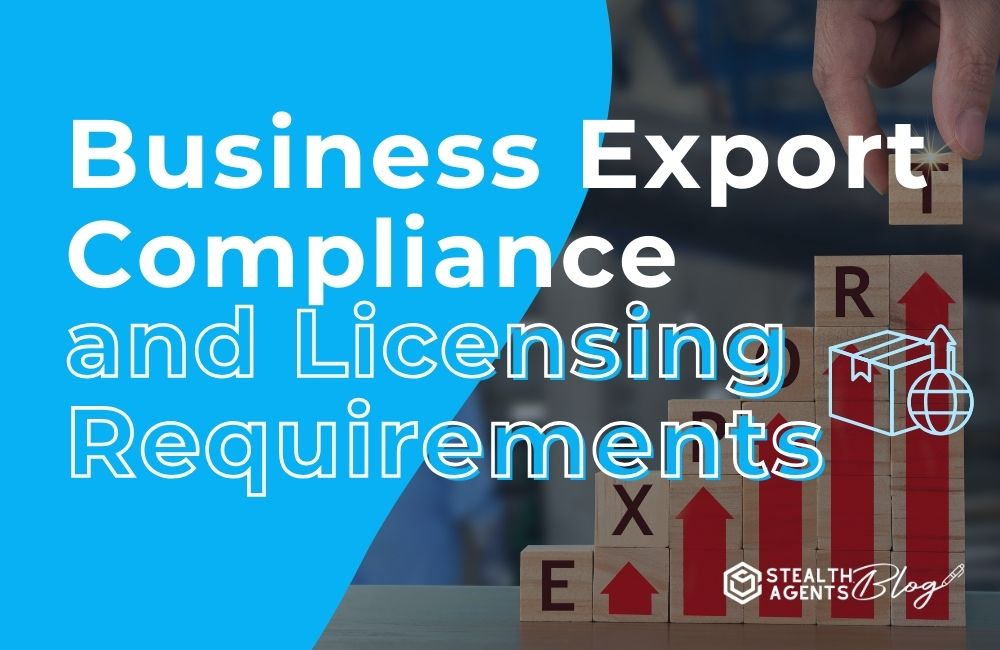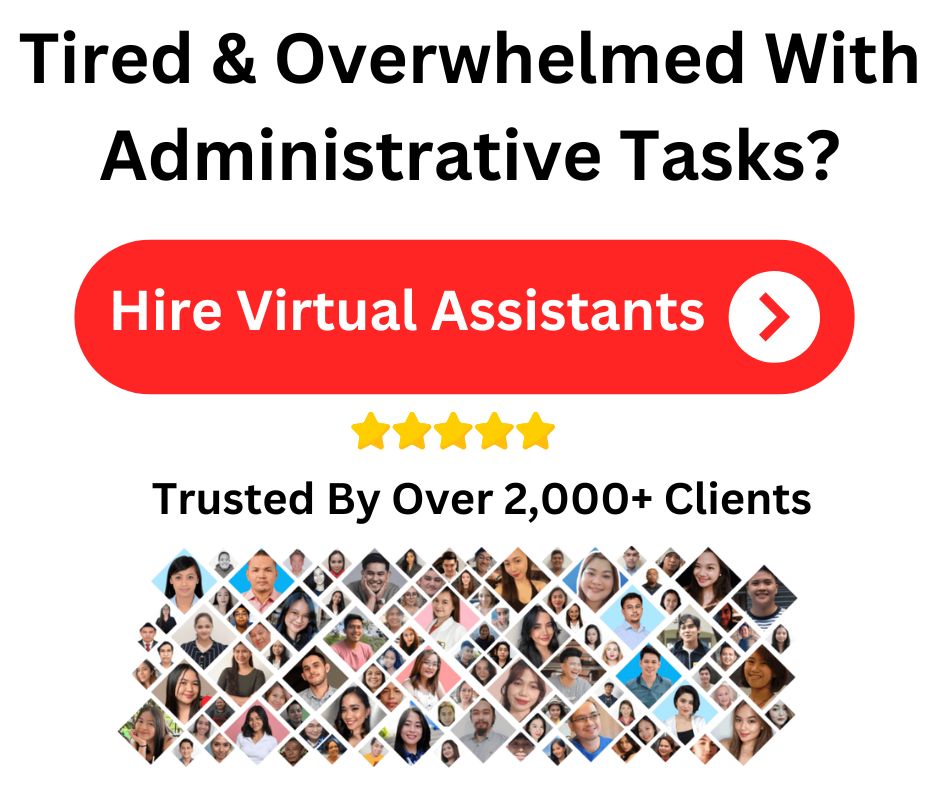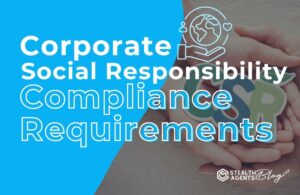Navigating Business Export Compliance and Licensing Requirements
Exporting goods and services across international borders can be like untangling a bureaucratic knot: essential for business growth, but also daunting due to its intricate regulations. Whether you’re a budding startup or a seasoned enterprise, understanding export compliance and licensing is not just another box to tick; it’s a vital part of global business strategy. In this comprehensive guide, we’ll sail through the choppy waters of export compliance, steering clear of potential pitfalls while ensuring your business smooth sailing.
The Cornerstone of International Business
Compliance with export regulations is the bedrock of international trade. It ensures that exports are consistent with national security, nonproliferation, foreign policy, anti-terrorism, and other regulatory objectives. It’s what enables nations to safeguard their interests while participating in the global marketplace, and as entrepreneurs, understanding these legal waters is paramount.
Navigating the Regulatory Channels
Export compliance is governed by a maze of regulations set forth by different countries. Perhaps the most notable is the U.S. Export Administration Regulations (EAR) for civilian technology and the International Traffic in Arms Regulations (ITAR) for military and defense technology. These guidelines, along with the Office of Foreign Assets Control (OFAC) sanctions program, create a formidable framework within which businesses must operate. They dictate who can export certain types of goods, technologies, and related data.
Steering Into Licensing Waters
Licensing requirements are the lighthouses of export compliance, signifying when permission is needed and who from. There are different tiers of licenses, ranging from automatic granted licenses for low-risk activities to case-by-case approval for high-risk technologies. It’s crucial to understand which type applies to your export and the steps involved in attaining them. Failure to do so can result in hefty penalties or, worse, criminal charges.
Sailing the Sea of Compliance
The export compliance voyage is peppered with challenges that test the mettle of even the most seasoned sailors. From deciphering complex regulations to managing the inherent risks, enterprises often find themselves navigating a tempest. However, with the right strategies in place, not only can these obstacles be overcome, but they can also become a source of competitive advantage.
Charting the Compliance Route
To stay abreast of evolving regulations, businesses must stay informed and integrate compliance directly into their operational models. This involves regular risk assessments, audits, and documentation review. Clear checklists and processes ensure that no regulatory boxes are overlooked.
Skillful Seafaring
A well-trained crew is vital for a successful export compliance voyage. Investing in staff education, workshops, and certification programs is akin to strengthening the sails against winds of uncertainty. Training should cover legal requirements, internal policies, and the nuances of global trade law to empower employees to make informed decisions.
The Technology Tiller
Modern technology offers a sea change in managing compliance. Software solutions provide real-time tracking, record-keeping, and automated alerts, making compliance less of a headache and more of a hands-off task. By leveraging these tools, businesses can significantly reduce the probability of human errors that may lead to non-compliance.
The Rudder of Risk Management
Risk is part and parcel of international commerce. However, with meticulous planning and clear protocols, risks can be mitigated, and business operations can run smoother. Risk management for export compliance involves identifying, assessing, and controlling potential threats to business objectives.
The Tides of Change
Global conflicts, emerging sanctions, and geopolitical shifts can create unpredictable currents. Monitoring and adapting to these changes in real-time are essential to avoid non-compliance scenarios. This nimble approach also offers businesses the agility to capitalize on new opportunities as they arise.
Safe Harbors and Protocols
Establishing clear protocols and fallback procedures ensures that if a compliance issue does arise, it’s promptly addressed. Employees should have a clear escalation path and be versed in incident response to minimize any operational disruptions.
Navigational Aids: Best Practices for Smooth Sailing
While every business’s compliance strategy will be unique, implementing best practices can set the course for long-term success. These practices provide actionable insights and methods to ensure a robust and resilient compliance program.
Compass Calibration: Continuous Training
In an environment where regulations are in constant flux, continuous training is not a luxury but a necessity. Regular workshops, updates, and simulations keep staff abreast of changes and well-versed in their compliance duties.
*advertisement*
Tired & Overwhelmed With Administrative Tasks?
Hire A Top 1% Virtual Assistant From Stealth Agents!

Sign Up Below & Hire A Top 1% Virtual Assistant
Rated 4.7 Stars Serving Over 2,000+ Customers.
Hire Top 1% Virtual Assistants For $10-$15 Per Hour
Ask About Our 14 Day Trial!
*advertisement*
Sonar Systems: Compliance Technology
Deploying the right technology can act as an early warning system, alerting businesses to potential compliance pitfalls. This can range from database screening for restricted parties to sophisticated AI-assisted compliance solutions.
The Crew’s Charter: Code of Conduct
A clear and comprehensive code of conduct is crucial. This charter should outline expectations, responsibilities, and the consequences of non-compliance, serving as a guide for employees’ actions and decisions.
The Wake of Non-Compliance: Consequences on the Horizon
Failing to meet export compliance requirements has repercussions that go beyond the immediate fine. They can lead to the loss of trust, market share erosion, and long-lasting damage to a business’s reputation. It’s like running aground on a reef – the impact is felt for years to come.
The Heavy Anchors of Fines and Penalties
For the uninitiated or unprepared, the penalties for non-compliance can be severe. Financial fines can cripple a business, and in some cases, executives may even face jail time. It’s not a risk worth taking, and every effort must be made to steer clear of violations.
The Storm of Reputational Damage
In the high seas of commerce, a reputation for reliability is the best-laid anchor. Non-compliance incidents tarnish this reputation, making it challenging to win back customer confidence. Whether it’s a small leak or a major calamity, damage control is always more onerous than good governance upfront.
The Harbor of Conclusion: Safe Port to Reflect and Prepare
Bringing the export compliance voyage to a safe port, it’s time to reflect on the essentials of staying on course. The importance of understanding and implementing strict compliance processes cannot be overstated. It’s not just a legal necessity; it’s a competitive advantage in the tumultuous waters of global trade.
A Proactive Mast: Initiating Compliance Efforts
Initiating compliance efforts is a bold move, akin to hoisting the sails toward new horizons. With a proactive stance, businesses can position themselves as leaders, not followers, in this vital aspect of international operations.
Casting the Net: Continuous Improvement
Constantly casting the net of improvement is essential to stay ahead of the compliance curve. Whether through employee feedback, technology updates, or industry best practices, the learning never stops in the quest for seamless operational compliance.
The Flotilla of Support: Building a Compliance Community
No ship sails alone, and in compliance matters, building a supportive community can make all the difference. Through partnerships, industry alliances, and external expert advice, enterprises can round out their compliance capabilities and ensure long-term success.
Embarking on the voyage of export compliance may seem daunting, but armed with knowledge, foresight, and the right approach, any business can emerge victorious. In the ever-expanding global market, compliance isn’t just about following the rules; it’s about setting a course for growth, sustainability, and above all, ethical business conduct. Fair winds and following seas to your business as it navigates the challenging but ultimately rewarding waters of international trade.
And remember, when it comes to compliance, it’s always better to be at the helm than in the storm’s wake.










